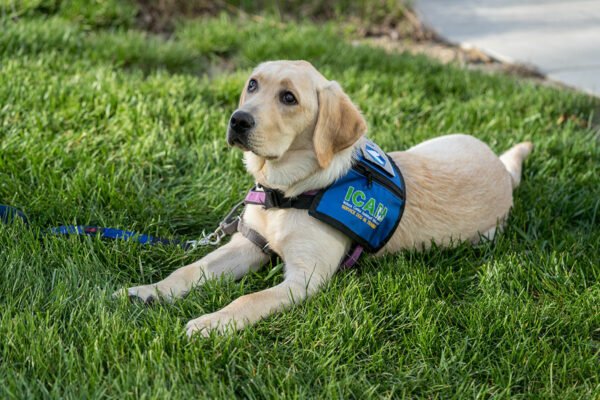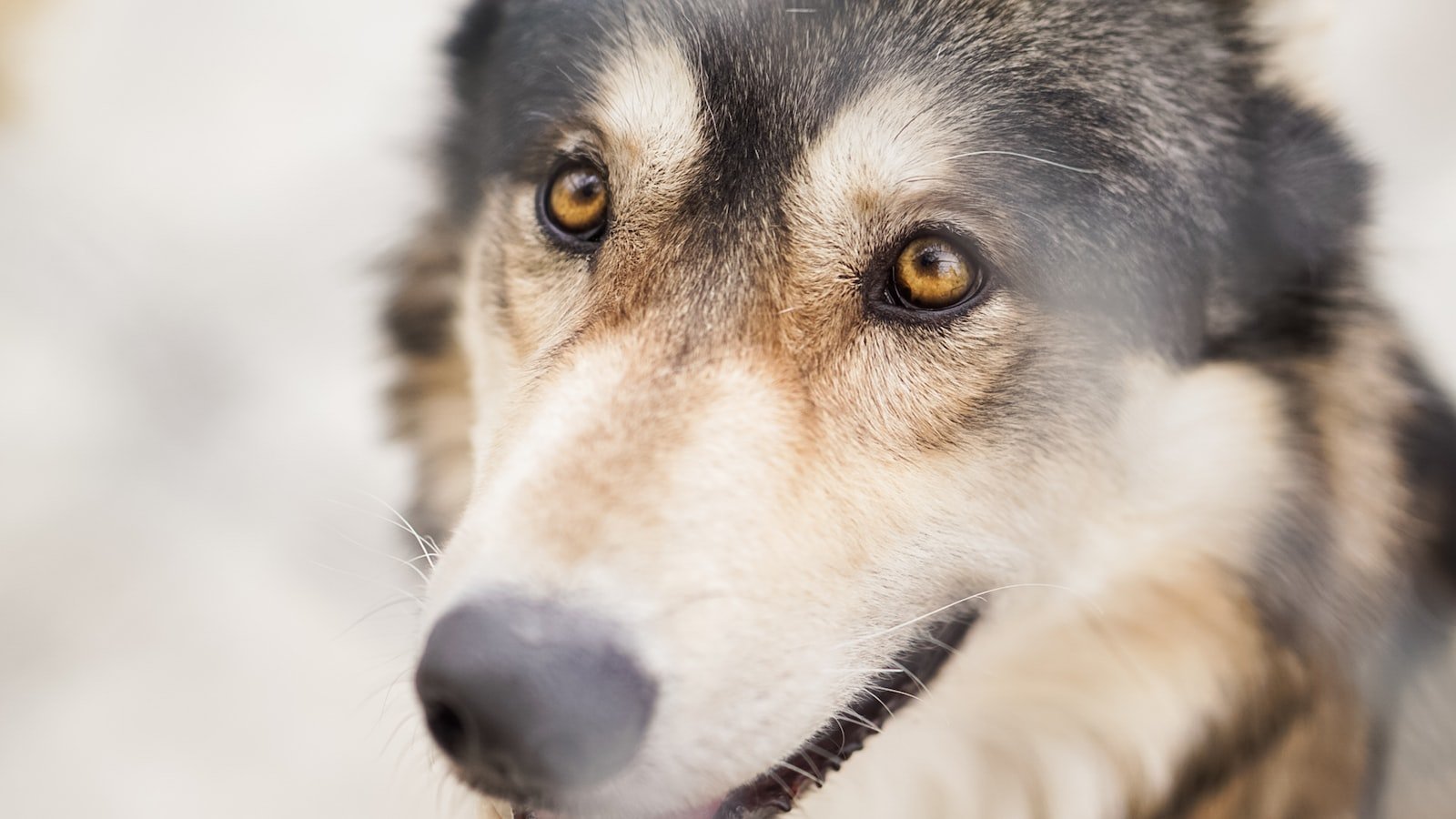Have you ever been astounded by the remarkable behavior and obedience of a well-trained dog? The sight of a canine effortlessly responding to commands, demonstrating impeccable manners, and showcasing impressive skills can leave us in awe. But what exactly are the signs of a well-trained dog? How can you recognize these characteristics in your own furry companion or identify them when searching for a new four-legged friend? This FAQ guide is here to assist you in unraveling the mysteries of dog training, providing insight into the key indicators of a dog’s training prowess. From unwavering focus to polished manners, let’s explore the telltale signs that set apart the canine connoisseurs of the training world and unleash the secrets of a well-trained dog.
Table of Contents
- Understanding the Basics: What is a Well-Trained Dog?
- Recognizing Body Language: Clues to a Well-Trained Canine
- Impressive Skills: Key Behaviors of a Well-Trained Dog
- Consistency is Key: Tips for Maintaining a Well-Trained Dog
- Taking it Further: Advanced Training Techniques for Exemplary Dogs
- Q&A
- To Conclude

Understanding the Basics: What is a Well-Trained Dog?
When it comes to having a well-trained dog, there are a few key things to understand. A well-trained dog is not just one that can perform a few basic commands like sit and stay; it is a dog that has developed good manners, respects boundaries, and is a pleasure to be around.
Good manners: A well-trained dog understands proper behavior in different situations. They don’t jump on people, bark excessively, or pull on the leash during walks. Instead, they greet people politely, remain calm in new environments, and walk nicely by your side. Good manners make interactions with your dog and others enjoyable and stress-free.
Respecting boundaries: Dogs that are well-trained understand and respect the boundaries set by their owner. Whether it’s staying off the furniture, not entering certain rooms, or waiting patiently for food, a well-trained dog understands and follows these rules consistently. This shows they have learned to listen and obey their owner’s commands.
Pleasure to be around: Ultimately, a well-trained dog is a joy to have around. Their obedience, good behavior, and understanding of boundaries make them a beloved member of the family and a pleasure to be around for both their owner and others. They are well-socialized, calm, and responsive to commands, making them easy to take out in public and enjoyable to spend time with at home.
In conclusion, a well-trained dog goes beyond basic commands; it encompasses good manners, respecting boundaries, and being a pleasure to be around. Investing time and effort into training your dog not only strengthens the bond between you but also ensures a harmonious and happy relationship for years to come.

Recognizing Body Language: Clues to a Well-Trained Canine
When it comes to understanding our furry friends, sometimes words are not enough. Canines have a unique way of expressing themselves through body language, and being able to decode these signals can greatly enhance your bond with your well-trained companion. So, let’s delve into some fascinating clues that will help you navigate the fascinating world of canine communication.
1. Tail Talk
A wagging tail doesn’t always mean a dog is happy, and a tucked tail doesn’t necessarily indicate fear. The position, speed, and movement of the tail can convey important messages about a dog’s emotional state. For example:
- A slow, gentle wag from side to side usually indicates relaxation or friendliness.
- A stiff, high tail wag can be a sign of alertness or dominance.
- A fast, vigorous wag with the whole body engaged often suggests excitement or happiness.
2. Ears Tell All
Canine ears are like a mood barometer. By paying attention to their ear position, you can gain valuable insights into a dog’s state of mind. Here are a few ear expressions and what they might mean:
- Upright ears: The dog is likely focused or attentive.
- Flattened ears: This could indicate fear, submission, or aggression.
- One ear up, one ear down: The pup might be curious or uncertain.
- Relaxed ears: A sign of relaxation or contentment.
By observing these subtle cues, you’ll be better equipped to interpret your furry friend’s body language accurately. Remember, practice and patience are key in becoming fluent in the fascinating language of dogs!

Impressive Skills: Key Behaviors of a Well-Trained Dog
Every dog owner dreams of having a canine companion that is not only lovable but also obedient. A well-trained dog possesses a range of impressive skills that make them a joy to live with. Here are some key behaviors that set them apart:
- Responsive Recall: A well-trained dog has mastered the art of coming when called. Whether they are in the midst of play or exploring the outside world, their ears perk up at the first sound of their owner’s voice, and they rush back without hesitation.
- Polite Leash Manners: Walking a well-trained dog is a complete delight. They effortlessly walk by your side without pulling or tugging, making every stroll a pleasant experience.
- Impressive Tricks: From basic commands like sit, stay, and lie down to more advanced tricks like rolling over or playing dead, a well-trained dog can perform an impressive repertoire of tricks. Their ability to quickly learn and execute commands is a testament to their intelligence and dedication.
These key behaviors are just a few examples of the qualities that make a well-trained dog stand out from the crowd. Investing time and effort into training your furry friend not only strengthens your bond but also ensures that they become a shining example of good behavior in any situation.
Consistency is Key: Tips for Maintaining a Well-Trained Dog
Dogs are intelligent creatures that thrive on routine and consistency. Training your furry friend is a lifelong commitment that requires patience, dedication, and a structured approach. Here are some tips to help you maintain a well-trained dog:
- Establish Clear Rules: Dogs need to understand what behaviors are acceptable and what are not. Consistently enforce rules such as not jumping on furniture or not begging for food at the table. Use clear and consistent commands to reinforce good behavior.
- Keep Training Sessions Short and Frequent: Dogs have short attention spans, so it’s best to keep training sessions brief. Aim for several short sessions throughout the day rather than one long session. This will help your dog better retain the lessons and prevent them from getting bored or overwhelmed.
- Reward Good Behavior: Positive reinforcement is a powerful tool in dog training. When your dog follows a command or displays good behavior, reward them with praise, treats, or their favorite toy. This will reinforce the idea that behaving well leads to positive outcomes.
- Be Patient and Consistent: Dogs learn at different paces, so patience is key. Stay consistent in your training methods and expectations. If you constantly change the rules or give mixed signals, your dog may become confused and lose motivation to follow commands.
- Practice in Different Environments: Dogs need to generalize their training to different environments and distractions. Gradually introduce your dog to new locations, people, and situations where they can practice their training. This will help reinforce their training and ensure they respond reliably in various situations.
Remember, consistency is the key to success when it comes to maintaining a well-trained dog. By establishing clear rules, conducting regular training sessions, rewarding good behavior, and remaining patient and consistent, you can help your furry companion become a well-behaved and happy member of your family.
Taking it Further: Advanced Training Techniques for Exemplary Dogs
When it comes to training your dog to be truly exceptional, basic commands and standard obedience are just the beginning. To truly unleash the potential in your four-legged companion, it’s time to explore advanced training techniques that will take your dog’s skills to new heights.
1. Target Training: Teach your dog to touch a specific object or target with their nose or paw. This technique can be used for a variety of advanced commands such as turning off lights, closing doors, or even fetching specific items.
2. Off-Leash Training: Develop your dog’s reliability and trust to the point where they can confidently follow commands even without a leash. Gradually introduce distractions to enhance their focus and responsiveness in a variety of environments.
3. Advanced Tricks: Once your dog has mastered the basics, it’s time to move on to more impressive tricks. Teach them to bow, roll over, play dead, or even jump through hoops. These advanced tricks not only showcase your dog’s intelligence and agility but also provide mental stimulation and strengthen your bond.
No matter which advanced training technique you choose, remember to always use positive reinforcement to encourage and reward desired behavior. Stay patient, consistent, and enjoy the journey of uncovering the exceptional talents that lie within your amazing dog!
Q&A
What are the signs of a well-trained dog?
A well-trained dog will exhibit various signs such as responsive behavior to commands, good leash manners, excellent socialization skills, and the ability to remain calm in various situations.
How can you tell if a dog is well-socialized?
A well-socialized dog is comfortable and confident around other dogs and different people. They show appropriate body language, engage in play without aggression, and are not easily overwhelmed or fearful in new environments.
Is obedience training necessary for every dog?
Yes, obedience training is crucial for all dogs. It provides mental stimulation, promotes good behavior, and strengthens the bond between dogs and their owners.
Can an older dog still be well-trained?
Absolutely! Dogs of all ages can be trained, although older dogs may require more patience and a slower pace. With proper training techniques, consistency, and positive reinforcement, an older dog can learn new behaviors and habits.
What are the benefits of having a well-trained dog?
Having a well-trained dog can improve your quality of life and create a harmonious environment. They are easier to manage and control, can participate in various activities, and are more welcome in public spaces.
How long does it take to train a dog?
The training time for a dog can vary based on numerous factors, including the dog’s breed, age, temperament, and prior training experiences. It is an ongoing process that requires consistency and repetition, and some behaviors may take longer to fully establish.
Should I hire a professional dog trainer?
Hiring a professional dog trainer can be beneficial, especially for owners who lack experience or have specific training needs. They can provide expert guidance, address behavioral issues, and teach both the dog and owner valuable skills.
What is positive reinforcement training?
Positive reinforcement training is a training method that rewards desired behavior with treats, praise, or play, while ignoring or redirecting unwanted behavior. By focusing on positive experiences, it encourages dogs to repeat desirable actions and builds a strong bond between dog and owner.
Do different dog breeds require different training approaches?
Yes, different dog breeds may have varying traits, energy levels, and instincts. It is important to adjust training techniques and methods to cater to the specific needs of each breed, ensuring effective communication and successful training outcomes.
Can a well-trained dog still have occasional behavioral issues?
Even well-trained dogs can exhibit occasional behavioral issues due to various factors such as illness, stress, or changes in their environment. However, with consistent training, appropriate management, and addressing these issues promptly, these instances can be minimized or resolved effectively.
To Conclude
As we conclude this illuminating journey through the FAQ of well-trained dogs, let us pause to appreciate the remarkable connection and unparalleled magnificence found within a perfectly trained canine companion.
With tails wagging in harmony and souls dancing in synchrony, the signs of a well-trained dog manifest themselves in delightful ways. They say a picture speaks a thousand words, but the symphony of gestures and behaviors displayed by a canine virtuoso is beyond any visual portrayal.
Picture a dapper dog, strutting with elegance and poise, his every step exuding confidence. This is a canine virtuoso who, with a single command, sits like royalty on his regal throne. A gentle nod guides him to lay gracefully, obediently waiting for the next cue. While the world bustles with external distractions, this well-heeled companion’s unwavering focus is solely on his human companion.
His communication skills transcend the boundaries of language. With a mere gaze, he conveys a profound understanding of both spoken and unspoken commands. His eyes sparkle with anticipation, his ears perk up like radar, and his body language becomes poetry in motion. Every cue is met with an eager response, for his instincts are finely honed, his training an art form.
Picture a dog who transforms chaos into calm: amidst mayhem, he remains stoically composed. He can walk gracefully on a leash, as if floating on air, without a hint of pulling or tugging. His polite manners reign supreme, as he greets friends and strangers alike with a gentle paw shake or a welcoming sniff. Through his unwavering discipline, he has earned the title of the ultimate canine diplomat.
And so, dear reader, as we bid adieu to this enlightening exploration of well-trained dogs, let us remember that such magnificent creatures exist not only in myth but in the homes of those fortunate enough to witness their captivating artistry.
May this journey inspire you to embark on your own canine odyssey, forging a bond of unwavering trust, surrendering to the harmony of obedience, and discovering the magic that lies within the paws of a well-trained dog. Remember, the road to a dog’s heart is paved with kindness, understanding, and a sprinkle of patience.
In the grand orchestra of life, the signs of a well-trained dog are not merely a sight to behold; they are a symphony that resonates with infinite beauty, enriching the lives of those who have the honor of sharing their journey with these extraordinary creatures.
As an affiliate, my content may feature links to products I personally use and recommend. By taking action, like subscribing or making a purchase, you’ll be supporting my work and fueling my taco cravings at the same time. Win-win, right?
Want to read more? Check out our Affiliate Disclosure page.